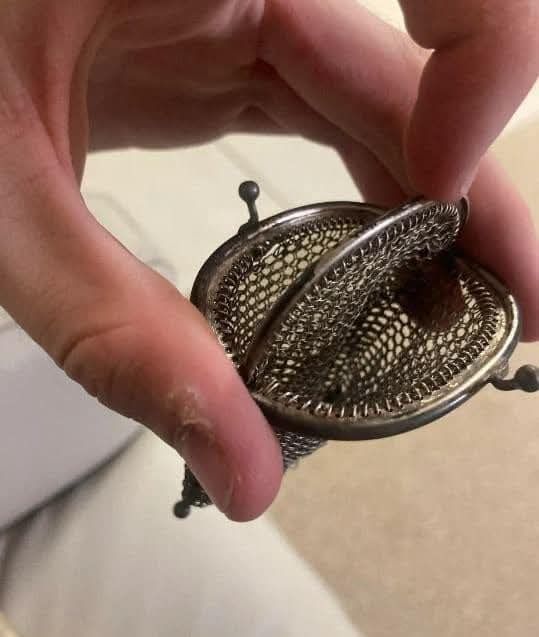ADVERTISEMENT
# Gilded Keepsakes: How Victorian Accessories Symbolized Wealth and Status
The Victorian era, spanning from 1837 to 1901, was a time of immense social change, industrial advancement, and strict social stratification. Amidst this shifting landscape, one thing remained constant: the role of fashion and accessories in signaling wealth, social class, and status. The opulent nature of Victorian accessories, often crafted with intricate designs and lavish materials, played a pivotal role in defining a person’s place in society. **Gilded keepsakes**, in particular, became treasured symbols of prosperity, status, and power.
Victorians believed that every detail of their attire, down to the smallest accessory, spoke volumes about who they were, where they came from, and where they stood in the rigid social hierarchy. Accessories, often gilded in gold or adorned with precious stones, were more than just embellishments—they were declarations of wealth and social prestige.
Let’s explore how these **gilded keepsakes** came to symbolize more than just luxury, but also a careful reflection of Victorian society’s values and ideals.
## The Rise of Gilded Accessories in Victorian Fashion
In the wake of the Industrial Revolution, the Victorian era saw the emergence of a new middle class that was eager to display their newfound wealth and sophistication. As mass production allowed for more affordable manufacturing, an increasing number of people were able to indulge in jewelry and accessories that were once reserved for the aristocracy.
However, it wasn’t just wealth that dictated the choice of accessories; **status** and **social rank** played an equally important role in shaping the types of gilded keepsakes worn. For the Victorian elite, these items were symbolic of both their financial resources and their adherence to societal norms, where appearances mattered deeply. Jewelry was often used to demonstrate good taste, moral virtue, and respectability.
### 1. **Gold and Gilded Jewelry**
The Victorians had a deep fondness for gold, particularly **gilded** jewelry, which was often made from base metals coated with a layer of gold to give them the appearance of wealth. Gold was a powerful symbol of prosperity, and its association with the upper class made it the go-to material for high-status accessories. It wasn’t just the wealthiest who wore gilded pieces—members of the emerging middle class also embraced them as a way of signaling upward mobility.
**Necklaces, bracelets, and brooches** were crafted in intricate designs that incorporated gemstones, enamel work, and fine metalwork. Elaborate cameos, which depicted classical portraits or romantic imagery, were popular during the Victorian period and were often set in gilded frames. These pieces were often passed down through generations, becoming treasured family heirlooms that further cemented the wearer’s status.
### 2. **Cameos and Brooches**
Cameos, particularly **gilded** ones, were a favorite in Victorian jewelry. These finely carved pieces often depicted profiles of women, classical deities, or romantic symbols, representing both refinement and sophistication. Brooches, often made from gold or gilded metal, were frequently worn to secure clothing or as decorative accents on dresses. The more ornate and detailed the brooch, the higher the social status it signified.
It was also common for these accessories to be personalized with intricate engravings or to feature **sentimental motifs** that reflected a person’s wealth, lineage, or moral standing. A gold brooch with a monogram or an emblem of a family crest was often used to assert a person’s aristocratic heritage or wealth.
### 3. **Hair Accessories: Gilded Combs and Pins**
Hair accessories in the Victorian era were another essential aspect of a person’s wardrobe, often adorned with gilded elements to symbolize status. **Gilded hair combs** and **pins** were popular among women, adding a touch of elegance to their hairstyles. These pieces were crafted from precious metals such as gold and were often set with jewels like pearls or diamonds.
As fashion evolved, so did the designs of these hair accessories, with many women opting for elaborately decorated **tiaras**, **headbands**, and **hairpins** that included gold filigree work. For the upper classes, having a gilded hairpin or comb was an unmistakable sign of wealth and fashion-forward thinking.
### 4. **Watch Chains and Fobs**
The Victorian fascination with **pocket watches** gave rise to a wide variety of ornamental chains and fobs, often made from **gilded metal**. These were not just functional items but also highly decorative accessories. Men, in particular, were known for wearing **gilded pocket watch chains** that draped across their waistcoats, while women often wore **pendant fobs** that featured intricate designs.
These accessories served as a symbol of a man’s financial standing and sophistication. The more ornate and gilded the chain, the greater the wealth and social standing it implied.
—
## The Significance of Symbolism in Victorian Accessories
Victorian accessories were not just about adornment; they often carried deep symbolic meaning. In a society that was highly concerned with appearances, the way a person dressed, down to their accessories, was a reflection of their identity and social position. Here’s how the symbolism of gilded accessories was deeply ingrained in Victorian culture:
1. **Expression of Wealth**
Jewelry and gilded accessories were a direct expression of wealth. Gold, diamonds, and other precious materials were inaccessible to the lower classes, making them exclusive to the elite. By wearing gilded items, the wealthy were able to clearly display their financial success and social standing. Wearing multiple layers of gilded necklaces, a profusion of rings, or oversized brooches was a way of declaring one’s wealth without uttering a word.
For Complete Cooking STEPS Please Head On Over To Next Page Or Open button (>) and don’t forget to SHARE with your Facebook friends
ADVERTISEMENT
